Interview: The In's & Out's of the Paycheck Protection Program
Recently, we have received numerous questions regarding the Paycheck Protection Program (PPP) and the forgivable loans being offered to small businesses by the Small Business Administration (SBA).
Although we may not have all of the information on hand, our goal is to remain your go-to financial resource throughout this period of turmoil and uncertainty. To better gain an understanding of the PPP loan opportunity, Blair had the opportunity to talk with a local business banker – who will remain anonymous – about the questions we have received most frequently over the past few days.
We hope this sheds some light on your situation. Of course, if you have questions, please do not hesitate to reach out. We are available and happy to help.
What is the Paycheck Protection Program?
This loan program was offered by the SBA as an arm of the recent CARES Act – the largest economic stimulus plan in history. The program offers forgivable loans to small businesses, as defined by the SBA, with the purpose to supplement payroll costs for the next 2.5 months. The loans are forgivable only if used to maintain current payroll or to hire back recently let-go employees.
To apply, visit your bank’s website. Most banks will offer PPP loans, however, the application process may vary from bank to bank. The total loan amount is currently capped as outlined by the SBA and stimulus package. Once the funds run out, it’s unclear whether more loans will be made available.
Blair: We have several groups/clients with 1099 individuals working for/with them. The question is two-fold:
- Can the employer claim those 1099 workers as part of their loan amount?
- If so, does that disqualify those individuals from also qualifying for the loan?
Business Banker: As far as I know, you as the employer can apply for the PPP loan to cover the payroll piece for 1099 employees. For us (large banks), the loan is being released in stages as far as when clients can apply. The 1099 businesses (contractors, self-employed, etc.) will be able to apply in one of the stages toward the end of this week.
So, yes, you (the employer) can apply for it and the 1099 individual(s) can apply for themselves as well.
Blair: So, it’s two-fold? I thought once we (the business) applied for those 1099 individuals then they could not. But that’s not the case. We can apply for those people and at the end of this week, they can apply themselves.
Business Banker: So, the application is going to ask them a couple of questions as far as what they’re using the loan for. The SBA guidelines are all underwritten and checked by the SBA, so the banks themselves don’t have any say when it comes to the approval process.
The SBA is going to make sure that when you (the employer) go in and apply for these employees, it’s not double-dipping into the same fund. But, as far as I know, as of this morning (4/7), there hasn’t been any separation. Again, that is being built on and we’re receiving guidelines from the SBA minute-by-minute.
Blair: Ok, that’s a great point; the SBA is going to be looking into disallowing any double-dipping. So, regarding that 1099 individual, maybe the employer is applying for payroll for that person but then that individual may be able to apply for their rent or any personal income that may be missing.
Business Banker: Correct.
Blair: Perfect. Then, does the loan apply to the white-collar 1099 individuals (i.e. mortgage, real estate industry, etc.)? They can qualify as well, correct?
Business Banker: Yes, correct. SBA loan guidelines have just been released as entity type, so as of right now we’re able to take on – and again, built on each bank’s platform – single-owner LLCs, s-corps, and sole-props just because that’s what the platform can hold right now.
Next will come multi-owned s-corps and LLCs. It doesn’t matter the industry that you’re in; they’re just releasing applications in waves based on the entity type.
It’s going to encompass anyone and everyone. They’re even putting together a format for larger corporations/non-profits. So, let’s take the zoo or the museum for example, what does that look like? It’s a way more complex loan, but it’s not excluding anyone based on the industry.
Blair: Ok, great. And what are you estimating the turnaround time is for these loans?
Business Banker: Yeah, that’s the question of the day every day. We are trying to turn it around in about a week or so. Again, it kind of depends on how fast this funnel (application process) moves through.
I’ll give you brief a synopsis of what we were told this morning:
As of today (4/7) – and this loan was released on Friday by the SBA – the SBA has submitted over 15 times the volume that it generally does in a quarter of the usual processing time.
So, the funnel is massive. We’re getting thousands and thousands of requests per hour.
As soon as that funnel is finalized, we’re able to allocate who needs what, and we get the applicant’s documentation, then we’re looking for the eSignature (from the SBA) which will take a couple of days to get back to the customer. From that point, they’re looking at a 24 to 48-hour turnaround time to actually fund money into the account.
Blair: Oh wow, that’s pretty fast.
Business Banker: Yeah, it’s pretty fast and I’ll be completely honest with you – and this is the scenario for all banks – just going through that funnel, you’re getting a lot of information.
A big question is, when will all banks fund it? And it really depends on the size of the bank doing the application. The larger banks can take it on digitally. That’s why we have the whole digital platform, so we don’t touch that SBA paper application. We’re not touching any of the documentation in hand, which is going to expedite the process. Some of the smaller banks are actually taking the paper applications, so they have to enter the information manually.
So, yeah, as soon as it goes into that funnel, our digital team starts processing the loan, and it gets into that eSignature piece, then we’re looking at a 24 to 48-hour timeframe to fund the accounts.
Blair: So then, do you already have customers who have their accounts funded on the PPP loan?
Business Banker: Not yet because the application went live Saturday morning and they’re still collecting information for the LLC.
Blair: Ok, ok. And then, one of my final questions is – and this is kind of an odd one – in your personal opinion, should businesses apply for this PPP loan even if they don’t actually need the money?
Business Banker: Here’s the way we look at it: the way the government is explaining the whole paycheck protection program as to be able to keep businesses afloat for the next 2.5 months, right? That’s the amount of time that everyone is hoping it’s going to take for this pandemic to go away. So, it’s really more of a business looking at the loan and thinking, what is it that we really need the loan for?
It’s a government loan that you don’t need a personal guarantee or collateral for. You’re pretty much signing a good-faith document saying “yep, we’re good to go for the SBA guidelines.” And there’s a piece in there that outlines how much is going to be forgiven by the government – how much of it is going to turn into a grant. And that’s the payroll piece.
So, when you’re asking about how long it takes to fund, one of the steps in the funnel – and this will all make sense in a second – is to collect the actual documentation from payroll.
Additionally, the business has to have been established before February 15th of this year. It doesn’t mean they have to have a bank account with us (varies from bank to bank); that has nothing to do with it. They have to have been registered with the secretary of state or any sort of state guidance before February 15th.
Now, the SBA is going to be asking about any documentation behind that payroll. For example, let’s say at your business you have 25 employees and you say, “look, there’s no way for us to pay these employees. They’re asking for unemployment. There are a lot of moving parts.”
We can use the paycheck protection program for that purpose; that’s the portion that’s going to be forgiven by the government.
So, that’s the big kicker for these businesses trying to make that decision. What is it going to be used for? And part of that stipulation is you would have to retain or hire back the majority of your original payroll. It’s not counting “hey, I’m going to hire in the future.”
It’s saying, “we’re keeping these people employed; we’re keeping these people paid [in order] to have the economy balance back as quickly as possible.” That’s the portion that’s going to be forgiven by the government.
Now, if the business were to take those funds and utilize them for rent or utilities or additional cash flow, then that’s the portion that they would have to pay back. And the payback period is about two years. They’re doing six months of deferred payment after you sign the loan, so that’s going to help a lot of businesses.
That was kind of a long answer to your question, but some would say, as a business owner, take a step back and say, “what are we going to use this for? If this is something we don’t need for payroll and we’re going to use it for utilities or cash flow or to make ends meet, is this something that we can take on as a debt?”
Because it won’t be forgiven if it’s not used for payroll.
Blair: I like it, I like it.
Austyn: Does the loan criteria differ from bank to bank?
Business Banker: The criteria, no. It doesn’t really change because it all has to come into agreement with the SBA and treasury as far as what the loan itself looks like. Now, the way it’s being implemented is being handled differently by each bank because each bank’s platform is different.
We hope this interview was able to answer some of your questions. We would like to extend a big thank-you to this local business banker for offering their time and expertise.
If you have any questions or you’re wondering whether the PPP loan is appropriate for you and your business, please don’t hesitate to reach out. We are available and happy to help.
The opinions voiced in this material are for general information only and are not intended to provide specific advice or recommendations for any individual.
No strategy assures success or protects against loss.
The economic forecasts set forth in this material may not develop as predicted and there can be no guarantee that strategies promoted will be successful.
All information is believed to be from reliable sources; however, Denver Wealth Management and LPL Financial make no representation to its completeness or accuracy.
The content provided herein is based on our interpretation of the CARES Act and is not intended to be legal advice or provide a tax opinion. This document is a summary only and not meant to represent all provisions within the CARES Act.

